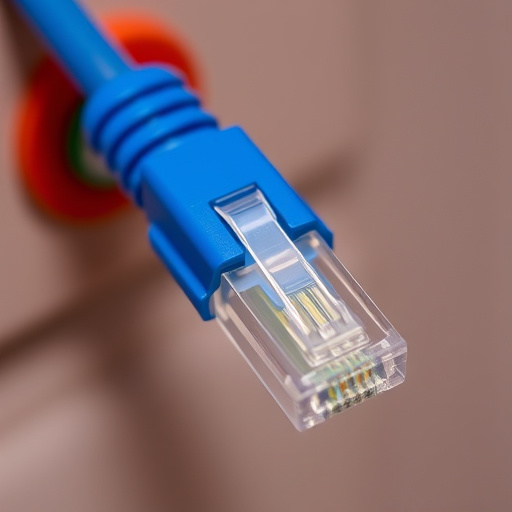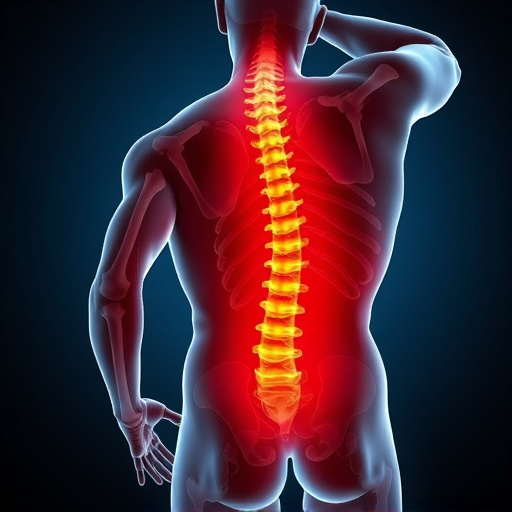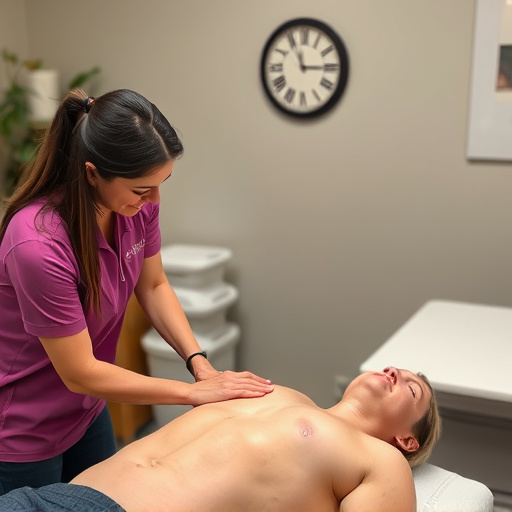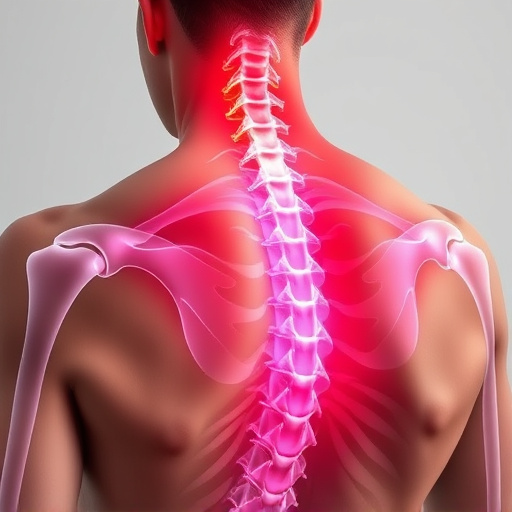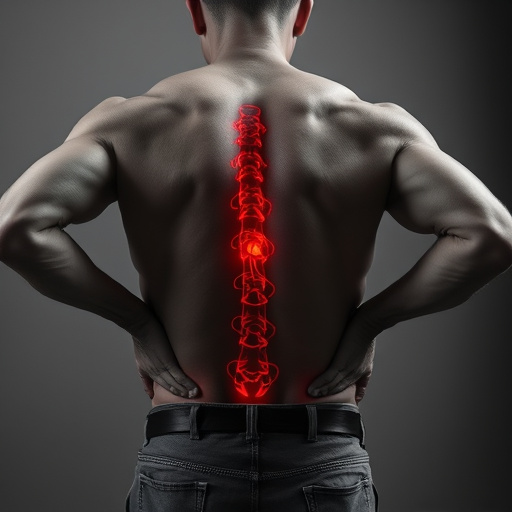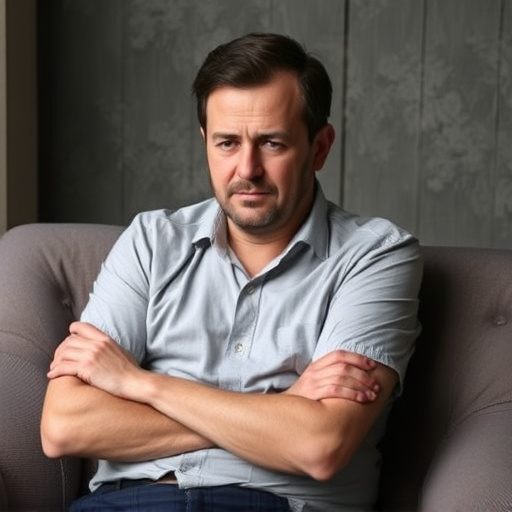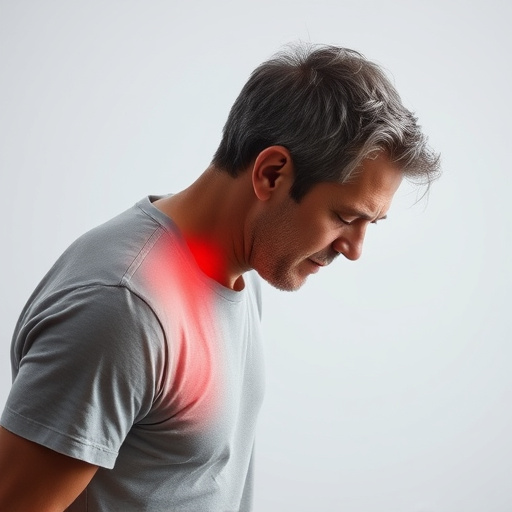Shockwave therapy, leveraging high-energy acoustic waves, has emerged as a powerful non-invasive treatment for shockwave sports injuries, accelerating healing and reducing recovery times compared to traditional methods. Tailored to specific injury types, it targets soft tissues like muscles, tendons, and ligaments, promoting regeneration and pain relief. A multidisciplinary approach integrating this therapy with chiropractic care, specialized rehabilitation exercises, and sport-specific programs offers promising results in managing chronic pain and mobility issues for athletes.
In the realm of modern sports medicine, shockwave therapy has emerged as a game-changer in treating sports injuries. This non-invasive technique offers a cutting-edge approach to healing, especially for stubborn or chronic conditions plaguing athletes. This article delves into the world of shockwave sports injuries, exploring its understanding, effectiveness in rehabilitation, and strategic integration into athlete care plans. By harnessing this technology, modern rehabilitation techniques promise accelerated recovery and enhanced performance for active individuals.
- Understanding Shockwave Therapy for Sports Injuries
- Modern Rehabilitation Techniques and Their Efficacy
- Integrating Shockwave into Comprehensive Athlete Care Plans
Understanding Shockwave Therapy for Sports Injuries
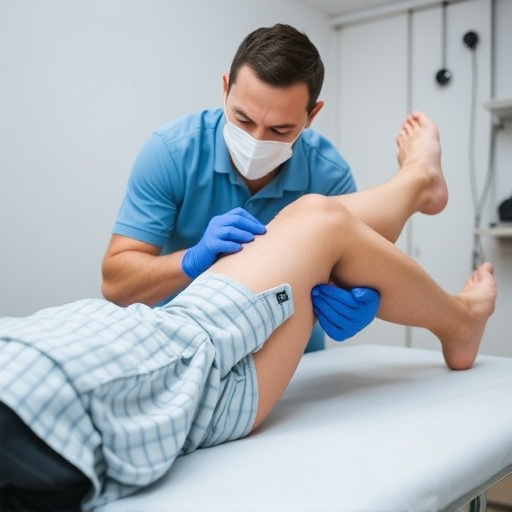
Shockwave therapy for sports injuries has emerged as a powerful tool in modern rehabilitation, offering hope for athletes and active individuals struggling with persistent conditions like lower back pain or musculoskeletal injuries. This non-invasive treatment utilizes high-energy acoustic waves to stimulate healing within damaged soft tissues. By penetrating deep into muscles, tendons, and ligaments, shockwaves promote tissue regeneration and alleviate pain associated with sports-related traumas.
The process involves delivering controlled shockwave pulses to the affected area, which can be highly targeted or applied over a broader region depending on the injury’s nature. This technology has gained significant attention due to its ability to accelerate healing and reduce recovery times compared to traditional methods for car accident injury care or other traumatic events. Its non-surgical nature makes it an attractive option for patients seeking effective yet minimally invasive treatments for sports injuries.
Modern Rehabilitation Techniques and Their Efficacy
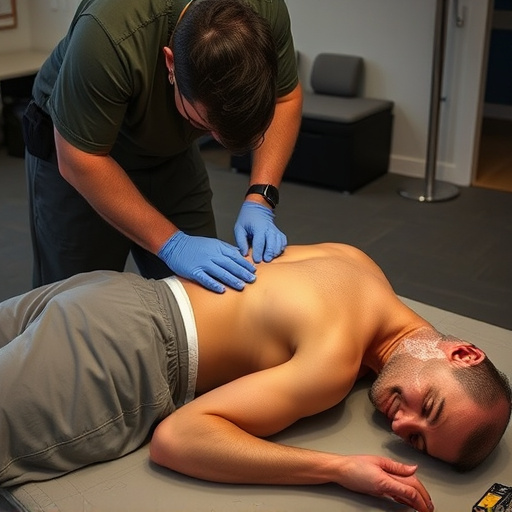
Modern rehabilitation techniques have evolved significantly, offering innovative approaches to managing shockwave sports injuries. One such method gaining traction is extracorporeal shockwave therapy (ESWT), which utilizes focused sound waves to stimulate healing. This non-invasive treatment has shown promising results in accelerating tissue repair and reducing pain associated with various sports-related conditions. For example, ESWT has been effective in treating chronic tendinopathy, often a prevalent issue among athletes.
Chiropractic care remains an integral part of post-injury care, focusing on spinal manipulation and joint mobilization to improve mobility and alleviate discomfort. Additionally, specialized rehabilitation programs incorporating exercises tailored to specific sports injuries have proven efficacious. These treatments, combined with proper whiplash treatment protocols, contribute to faster recovery times and enhanced performance for athletes. The key lies in personalized care, where a multidisciplinary approach, including shockwave therapy, chiropractic adjustments, and targeted exercises, can revolutionize the way we address sports-related injuries.
Integrating Shockwave into Comprehensive Athlete Care Plans

Incorporating shockwave therapy into comprehensive athlete care plans has emerged as a game-changer in modern rehabilitation. This non-invasive treatment option is particularly beneficial for athletes dealing with chronic pain and mobility issues stemming from sports injuries. By leveraging the power of acoustic waves, shockwave therapy can stimulate tissue repair, promote nerve regeneration, and reduce inflammation, making it an effective solution for conditions like tendinopathy, muscle strains, and even neck pain treatment.
The integration of shockwave into athlete care plans requires a multidisciplinary approach. Physical therapists and sports medicine professionals work together to assess the athlete’s specific needs and design a tailored treatment regimen. This may include regular sessions of shockwave therapy coupled with other therapeutic modalities for optimal results in chronic pain management. As research continues to evolve, the role of shockwave in enhancing recovery and performance among athletes is poised to grow, promising improved mobility and a swift return to active lifestyles.
Shockwave therapy for sports injuries has emerged as a powerful tool in modern rehabilitation, offering a non-invasive approach to treat various conditions affecting athletes. By integrating this technology with comprehensive care plans, healthcare professionals can enhance recovery outcomes and optimize performance. Understanding the efficacy of shockwave treatment and its safe application is crucial in navigating the complex landscape of athlete care. Embracing these innovative techniques ensures athletes receive cutting-edge rehabilitation, fostering a faster and more effective road to recovery.

